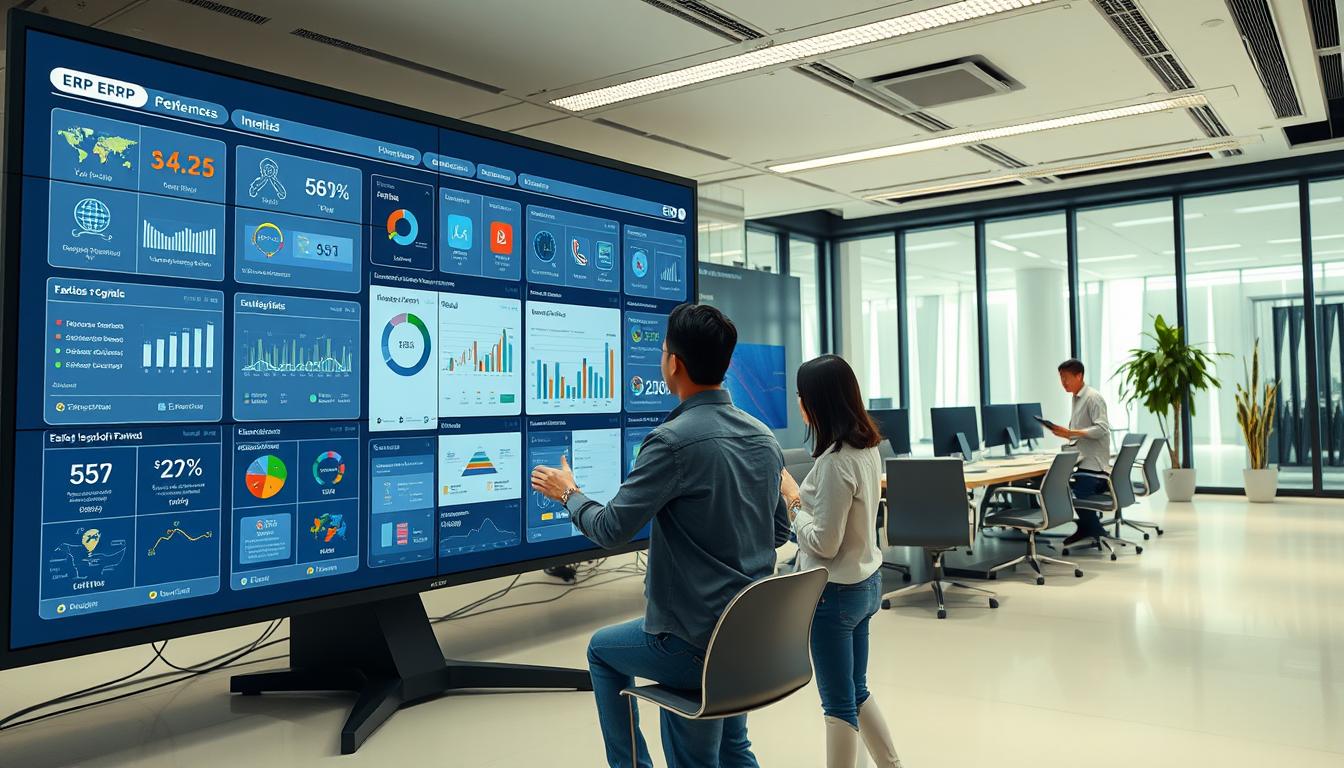Is your ERP system slowing you down instead of helping you grow? This is a big question for small and medium-sized businesses in the Philippines. As your business expands and the world changes, knowing when to upgrade your ERP is key. An old system can cause problems, slow you down, and make decisions harder.
By checking how well your ERP system works, you can find the best time to upgrade. This way, you can use the latest technology and grow your business in a healthy way.
Figuring out when to upgrade can be tricky. Look for signs like slow performance or trouble adding new tech. Knowing these signs helps you make smart choices that help your business grow and work better. For more tips on improving your operations, check out this useful resource.
Key Takeaways
- Evaluate your current ERP system’s performance regularly.
- Identify operational challenges that may signal the need for an upgrade.
- Improve business efficiency through timely ERP upgrades.
- Embrace modern technologies to enhance system functionality.
- Align ERP upgrades with your company’s growth trajectory.
The Importance of an Effective ERP System
An effective ERP system is key for many organizations. It connects important business areas like finance, human resources, and sales. This makes processes smoother and more connected.
In the Philippines, small and medium enterprises (SMEs) find it essential. They use it to improve their workflows and boost productivity.
Understanding the Role of ERP in Business Management
ERP plays a huge role in business management. It gives teams real-time data for better decisions. This leads to improved performance.
It makes processes more efficient, cuts down on errors, and helps teams work together better. This teamwork leads to better results.
Benefits of a Modern ERP System
Modern ERP systems offer more than just better functionality. They provide clear data and better security. Features like automation and mobile access are key for big companies or those with remote teams.
These features help companies stay competitive in today’s market. They make it easier for businesses to succeed.
Signs It’s Time for an Upgrade
Knowing when to upgrade your ERP system is key to smooth operations. Several signs show it’s time for a system boost to meet changing business needs.
Frequent System Performance Issues
System crashes and slow speeds are big reasons to think about an ERP upgrade. These problems can really mess up your day. For small to medium businesses in the Philippines, they can cause big losses in productivity and upset employees.
If your ERP system can’t handle data fast enough, it’s time for a change.
Integration Challenges with New Technologies
Dealing with new tech can also mean it’s time for an ERP update. Businesses need systems that work well with new tools and services. If your system can’t connect with mobile apps or cloud services, you’re missing out.
Evaluating Current System Limitations
Organizations often face challenges when evaluating their current system limitations. Identifying outdated workflows and processes is key to boosting productivity. By pinpointing these inefficiencies, businesses can develop strategies to streamline operations and boost performance.
Identifying Outdated Workflows and Processes
Outdated workflows can slow down an organization’s progress. Signs include manual processes that lead to errors and delays. By assessing current operations, businesses can compare them to more advanced systems.
This comparison helps decision-makers choose effective solutions. It addresses persistent issues and improves overall performance.
| Workflow Aspect | Current Method | Proposed Improvement |
|---|---|---|
| Data Entry | Manual entry with potential for errors | Automated data integration |
| Reporting | Weekly manual reports | Real-time dashboards |
| Task Management | Email notifications | Integrated task management tool |
Understanding Mobile and Remote Access Needs
With the rise of remote work, mobile access needs are more vital than ever. Employees need to access data from anywhere. A system that lacks mobile compatibility restricts user effectiveness and collaboration efforts.
Transitioning to a cloud-based ERP solution can meet these demands. It enables employees to work efficiently from anywhere. This ensures higher levels of engagement and productivity.
Scalability & Upgrades
Scalability and ERP upgrades are key for modern businesses aiming for growth. As companies grow, their needs change. A good ERP system meets today’s needs and grows with the business.
Assessing Business Growth and Future Needs
Looking at business growth is crucial for scalability. As companies enter new markets or offer more products, their ERP must adapt. This ensures it can handle more customers, data, and reports.
The Impact of Upgrading for Scalability on Operations
Upgrading to a scalable ERP boosts efficiency. A flexible ERP helps businesses quickly meet customer needs and market changes. This agility gives them a competitive edge and supports ongoing growth.
| Aspect | Current System | Upgraded System |
|---|---|---|
| Transaction Handling | Limited capacity | High-volume processing |
| Data Management | Manual entry required | Automated integration |
| Reporting Capability | Basic insights | Advanced analytics |
| Market Adaptability | Slow response time | Rapid adjustments |
Cost Considerations for Upgrading Your ERP
When thinking about upgrading your ERP, cost is key. It’s important to know the costs of keeping your old system and the price of a new one. This helps you make a smart choice for your business.
Analyzing Maintenance Costs vs. Upgrade Costs
Many companies spend a lot on old ERP systems. These costs add up and can be more than a new system. Moving to a modern ERP can save money and boost your business.
Long-Term Benefits vs. Initial Investment
Looking at the future, an ERP upgrade often pays off. It can make your business run better, save money, and grow. Choosing the right upgrade can make your company more profitable and productive.
Selecting the Right Time for an Upgrade
Choosing the best time for an ERP upgrade is key. It must fit with your company’s strategy. The timing should cover both technical needs and business goals. This ensures a smooth transition that boosts efficiency and meets market demands.
Aligning Upgrades with Business Goals
Linking an ERP upgrade to your business goals is crucial. Before upgrading, review your current and future plans. A timely ERP upgrade can help achieve your strategic goals and improve operations.
- Improving operational efficiency
- Streamlining resource management
- Enhancing customer service capabilities
Identifying Critical Business Events for Transition
Identifying key business events helps pick the perfect upgrade time. Events like starting a new fiscal year or launching a product are good triggers. Upgrading during these times aligns with your company’s changes and maximizes the new system’s benefits.
Doing a thorough needs analysis before upgrading is essential. It helps spot challenges or opportunities the new system should handle. This step aligns with your upgrade timing and business goals, ensuring a successful transition and long-term success.
Planning a Successful ERP Upgrade Process
Effective planning is key to a successful ERP upgrade. A detailed action plan acts as a roadmap, guiding through each phase. It starts with assessment and ends with evaluation. Involving employees early helps understand their needs, making the upgrade more effective.
Creating a Comprehensive Action Plan
A good action plan outlines key steps like timelines, resources, and risks. It brings clarity and smooths out the upgrade process. A clear plan helps focus on tasks and sets achievable goals, keeping the upgrade on track.
Training Employees for a Smooth Transition
Employee training is vital for a smooth upgrade. It prepares staff for system changes and helps overcome new system challenges. Hands-on training reduces disruptions and ensures a smooth transition. Working with experienced ERP vendors, like Globe3, provides the support needed for effective training.
Common Mistakes to Avoid During the Upgrade
Upgrading an ERP system can greatly improve business functions. Knowing and avoiding common mistakes during an ERP upgrade is key to success. Proper planning and thorough employee training are essential and should not be ignored.
Insufficient Planning and Preparation
One major reason for ERP upgrade setbacks is poor planning. Companies often make planning mistakes that cause data problems and disrupt operations. A well-thought-out plan should cover timelines, resources, and roles, ensuring a smooth upgrade process.
Neglecting Employee Training Needs
Ignoring the need for employee training is another big mistake. Many believe users will easily adapt to the new system without help. This can result in low adoption rates and reduced productivity after the upgrade. Investing in employee training equips staff with the skills they need and creates a positive transition, boosting efficiency.
Conclusion
Knowing when to upgrade your ERP system is key for growing businesses, like those in the Philippines. It’s about looking at your current system, how your business is growing, and the cost benefits. Moving to a new ERP system can make your business run smoother and get ready for future challenges.
Planning well and getting your team involved is crucial for a smooth upgrade. This teamwork leads to better use of the new system, making your business run better. Think about using tools like employee tracking to make your operations even more efficient.
Upgrading your ERP system is not just about technology; it’s a strategic choice that fits your business goals. A modern ERP system boosts productivity and helps your business grow. It keeps you ahead in the changing market.




